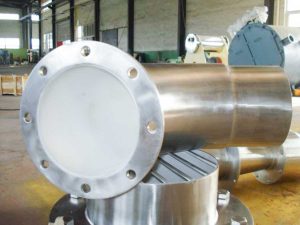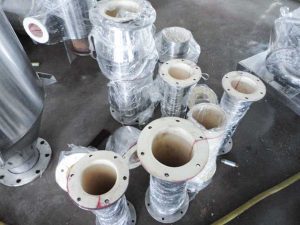Ceramic pulverizer, pollution-free production of ultra-fine powder materials
For traditional pulverizers, materials are pulverized through shearing force, squeezing force, impact force and grinding force. The crushed material needs to be in direct contact with the grinding body or grinding medium. Most grinding bodies are made of various metal materials, and metal impurities will inevitably be introduced during the grinding process. Therefore, in the fields of lithium battery materials, medicines, health products, and foods that require pollution-free crushing treatment, the application of mechanical crushers is greatly restricted. If you want to use a mechanical shredder in an industry without magnetic pollution, you need to design a shredder. During the grinding process, the part in contact with the material must be a ceramic structure. In the study of the crushing process of lithium battery materials, we developed and produced ceramic mechanical ultra-fine crushers according to customer needs. The whole equipment system has high integration, low fine powder rate, high yield, good particle shape, strict control of large particles, and is deeply loved by users of lithium battery materials.
In addition, because of their special material properties, some materials may adhere during the crushing process, leading to material blockage or agglomeration, which brings considerable trouble to the crushing work. After long-term accumulation of experience and continuous innovation and improvement, the ceramic-lined jet mill is launched for the phenomenon of material adhesion.


The fluidized bed jet mill that uses high-hardness engineering ceramics to make all flow-through parts is made of high-hardness brittle materials, elastic plastic materials, agglomerated materials, and fibrous materials, such as zircon, alumina, rutile, titanium dioxide, and zirconia. It is an ideal crushing equipment for crushing materials such as, talc, kaolin, graphite, paint, pesticides, fertilizers, pollen, and food raw materials. Ceramic-lined jet mill not only has the advantages of general fluidized bed jet mills, but also, because the machine’s lining is made of high-strength, wear-resistant and high-temperature engineering ceramics, it can not only adapt to high temperature and overheating up to 400℃ The steam working medium does not pollute the material to be pulverized. It is a necessary equipment for high-quality ultra-fine pulverization. At the same time, the cost of airflow ultra-fine pulverization is mainly the cost of the pulverizing working medium, and the superheated steam working medium is higher than the compressed air working medium The cost is reduced by a quarter. In addition, the superheated steam working fluid will not generate static electricity, so there will be no wall sticking phenomenon. Therefore, it is suitable for using compressed air to crush some materials that will stick to the wall at room temperature, such as: the production of titanium dioxide .
The ceramic-lined jet mill is mainly composed of a feeding device, a crushing chamber, a discharge port, a steam distribution pipe and a nozzle. The material of the feed nozzle and the crushing nozzle are made of high-strength wear-resistant and high-temperature special alloy, and the nozzle structure is supersonic design; the rest of the flow parts are lined with high-strength wear-resistant and high-temperature engineering ceramics, and the feed venturi tube , The ceramic middle ring, the lining of the discharge port, the ceramic upper cover and the ceramic lower cover are made of high-strength reaction sintered silicon carbide; the steam distribution pipe and the main body jacket and other parts are made of stainless steel and polished, and the appearance of the whole machine is beautiful and compact. The ceramic-lined jet mill can be used in conjunction with the jet classifier. According to the physical characteristics of the material and the purity requirements of the finished product, ceramic sheets are lined inside the equipment to increase wear resistance, reduce the impact of materials on the equipment, and increase the use of the equipment Life, and accurately control the iron content of the material in the crushing and grading process. Successfully solved a series of problems such as the adhesion of battery materials, poorly made, and inaccurate classification.
The ceramic-lined jet mill has the following performance advantages:
- It is suitable for dry pulverization of various materials with Mohs hardness below 9, especially suitable for the pulverization of materials with high hardness, high purity and high added value.
- The breakthrough of particle acceleration technology has greatly improved the pulverization efficiency, reduced the energy consumption, the over pulverization is small, the particle shape is good, the particle size distribution is narrow and there are no large particles.
- During the crushing process, the airflow temperature is reduced due to the rapid expansion of the airflow, which is especially suitable for the crushing of heat sensitive, low melting point and volatile materials.
- The crushing of materials by collision with each other is different from the mechanical crushing which relies on the impact crushing of the materials such as blades or hammers, plus a full range of ceramic lining, so the equipment is less abraded and the product purity is high.
- It can be used in series with a multi-stage air classifier to produce products with multiple particle sizes at one time.
- The ceramic-lined jet mill has a compact structure, easy to disassemble and clean, and the inner wall is smooth and has no dead corners.
- The entire system runs in a closed vacuum with no dust, low noise, and the production process is clean and environmentally friendly.
